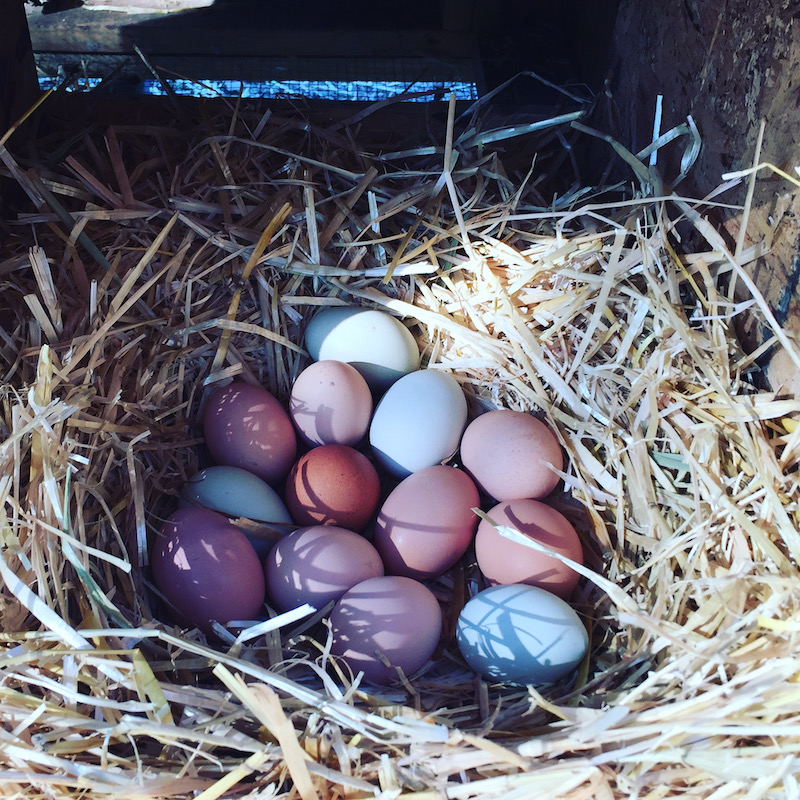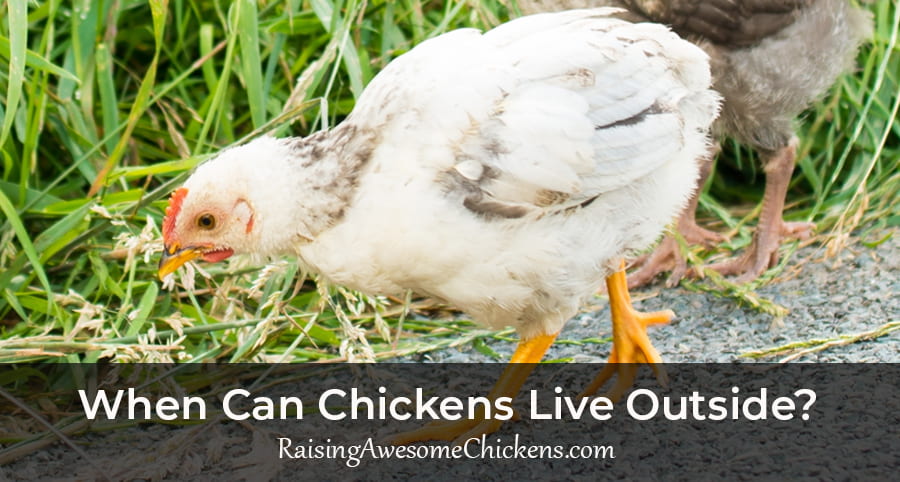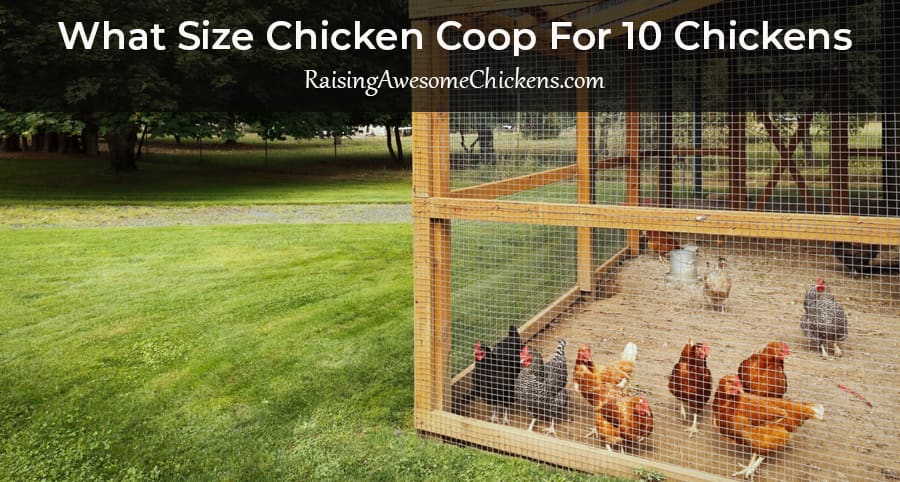Last Updated on February 11, 2024 by AwesomeChickens
Raising chickens has become a popular pastime for individuals seeking a sustainable lifestyle or simply enjoying the company of these feathered friends. A key component of chicken care is providing a safe and comfortable environment, which is where the chicken run plays a vital role. A well-designed chicken run allows for adequate exercise and access to fresh air while protecting the flock from predators and harsh weather conditions.
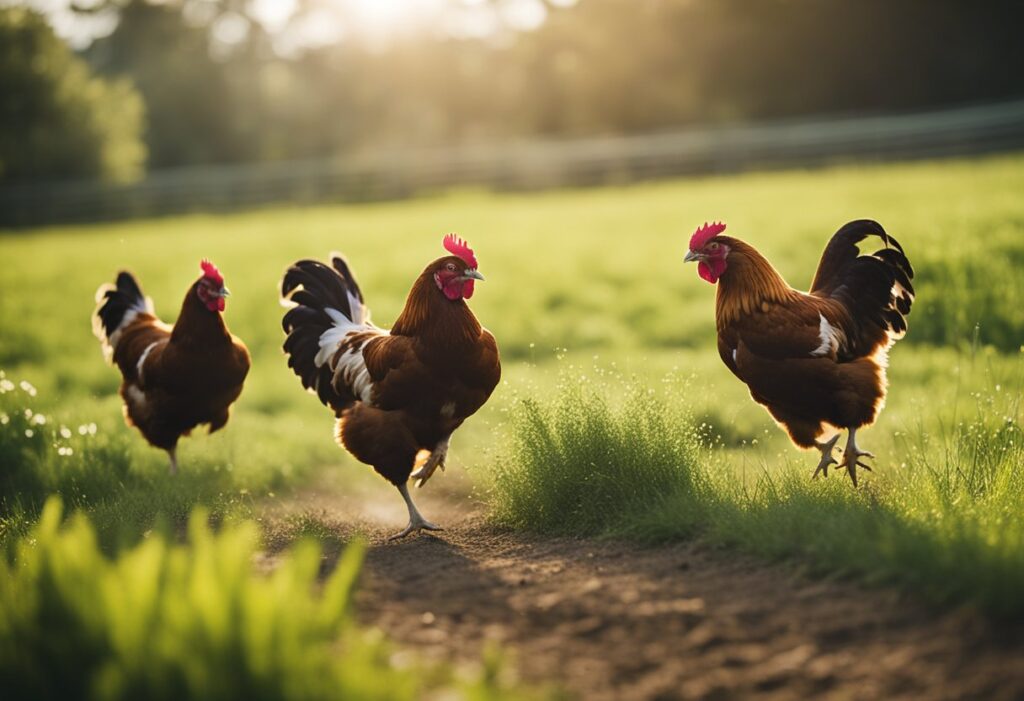
When considering the best chicken run, several factors come to the forefront. Durability, size, and ease of cleaning are paramount for the well-being of the chickens and the convenience of the owner. Equally important is the run’s ability to integrate with a coop and its surrounding environment, ensuring that the chickens have a harmonious living space that meets all their needs.
Through careful selection and consideration, a chicken run can significantly improve the quality of life for backyard chickens. The best options on the market balance security features with a spacious and enriching environment. These runs provide not just shelter, but a thriving space for chickens to live and produce optimally.
Table of Contents
Understanding Chicken Runs
Chicken runs provide secure outdoor space for poultry, offering protection while allowing them to forage and exercise. Design varies to address different needs and circumstances, influencing the choice of structure.
Purpose of Chicken Runs
Chicken runs primarily serve to protect chickens from predators and contain them within a designated area. They allow for adequate movement and exercise, crucial for maintaining the health and welfare of the birds. Ensuring chickens have access to fresh air and sunlight, they contribute to a healthier flock with improved quality of life.
Types of Chicken Runs
Different styles and materials define the various types of chicken runs. These are some common categories:
- Fixed:
- Permanent structure
- Typically larger and more robust
- Mobile (also known as “chicken tractors”):
- Easily relocated to provide fresh grazing areas
- Reduces ground wear and maintains grass health
- Modular:
- Allows for expansion or reconfiguration
- Suits growing flocks or changing needs
- Enclosed/Covered:
- Adds a layer of protection against aerial predators
- Often used in areas with high predator presence
Construction materials range from wood and metal to PVC and wire mesh, each with different durability and security features. Size and style should be chosen based on flock size, available space, and environmental considerations.
Key Factors for the Best Chicken Runs
In constructing the ideal chicken run, certain factors are paramount. These factors influence the health, safety, and well-being of the chickens.https://www.youtube.com/embed/s5qCUtw_Kro
Size and Space Requirements
Minimum Space: For each chicken, 10 square feet of outdoor space is recommended to ensure enough room for foraging and exercise.
Chicken Quantity and Run Size:
- 4 Chickens: 40 square feet
- 6 Chickens: 60 square feet
- 10 Chickens: 100 square feet
Durability and Protection
Materials must withstand various weather conditions and deter predators.
- Materials: Galvanized steel, hardwood, heavy-duty wire.
- Design Considerations: Secure latches, covered roof, mesh size smaller than 1/2 inch to prevent predators such as snakes and rats.
Ease of Access
Humans: A walk-in design is preferable for easy cleaning and interacting with the chickens.
Access Points:
- Doors: At least one human-sized door.
- Panels: Removable or opening panels for reaching all areas.
Maintenance and Cleaning
Ease of cleaning is essential for disease prevention and overall flock health.
Cleaning Features:
- Floors: Removable or slide-out droppings trays.
- Materials: Surfaces that are easy to hose down and disinfect.
A well-conceived chicken run is instrumental in fostering a healthy and productive environment for backyard poultry. They need ample space, sturdy protective elements, user-friendly access, and features that facilitate regular maintenance.
Materials and Construction
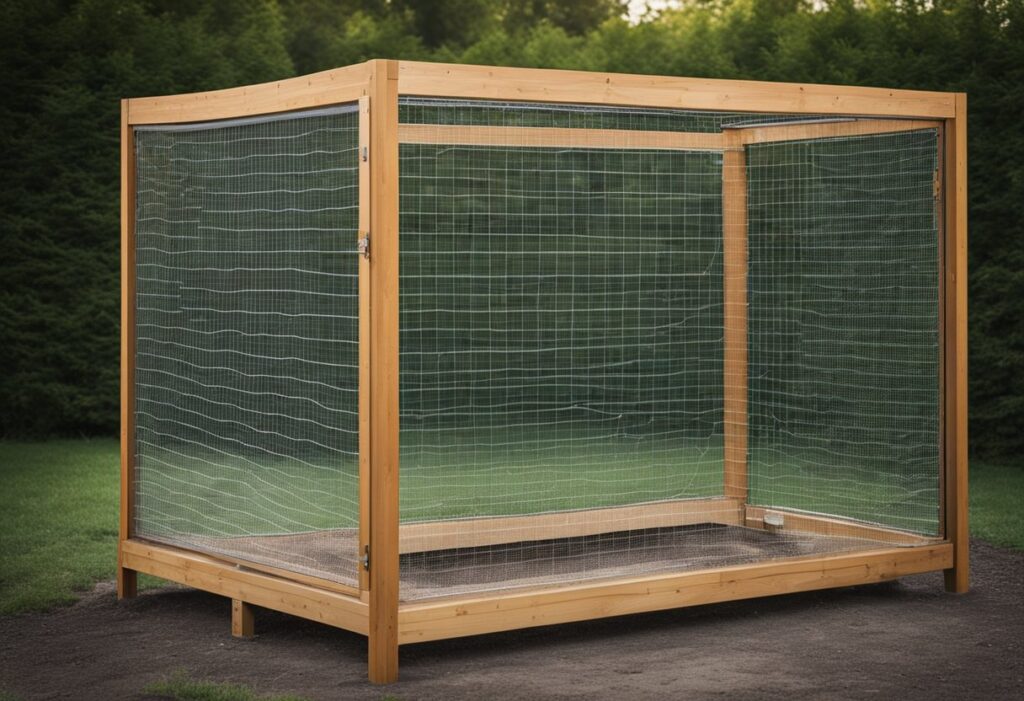
Selecting appropriate materials and employing proper construction techniques are crucial for building a durable and functional chicken run. These factors ensure the safety and comfort of the chickens while providing ease of maintenance to the owner.
Choosing the Right Materials
When choosing materials for a chicken run, durability and safety are the top priorities. The primary materials often include:
- Wood: Pressure-treated lumber resists rot and pests, ideal for framing.
- Wire Mesh: Hardware cloth with 1/2-inch spaces prevents predators from entering.
- Roofing: Corrugated metal or heavy-duty tarpaulin offers protection from elements.
Tables for Material Options:
| Material Type | Characteristics | Use Case |
|---|---|---|
| Wood | Pressure-treated, durable | Framing |
| Wire Mesh | 1/2-inch spaces, sturdy | Walls, Doors |
| Roofing | Weather-resistant | Covering |
Construction Techniques
Proper construction techniques enhance the stability and longevity of the chicken run. They include:
- Framing: Construct a solid frame with corner bracing for extra stability.
- Attaching Mesh: Secure the wire mesh to the frame with heavy-duty staples or screws.
- Roof Installation: Ensure that the roof has a slight slope for water runoff and is securely attached to withstand wind.
Framing and Mesh Attachment Tips:
- Pre-drill holes to avoid wood splitting.
- Use galvanized staples/screws for rust resistance.
- Confirm all edges are smooth to prevent injury to the chickens.
Design and Aesthetics
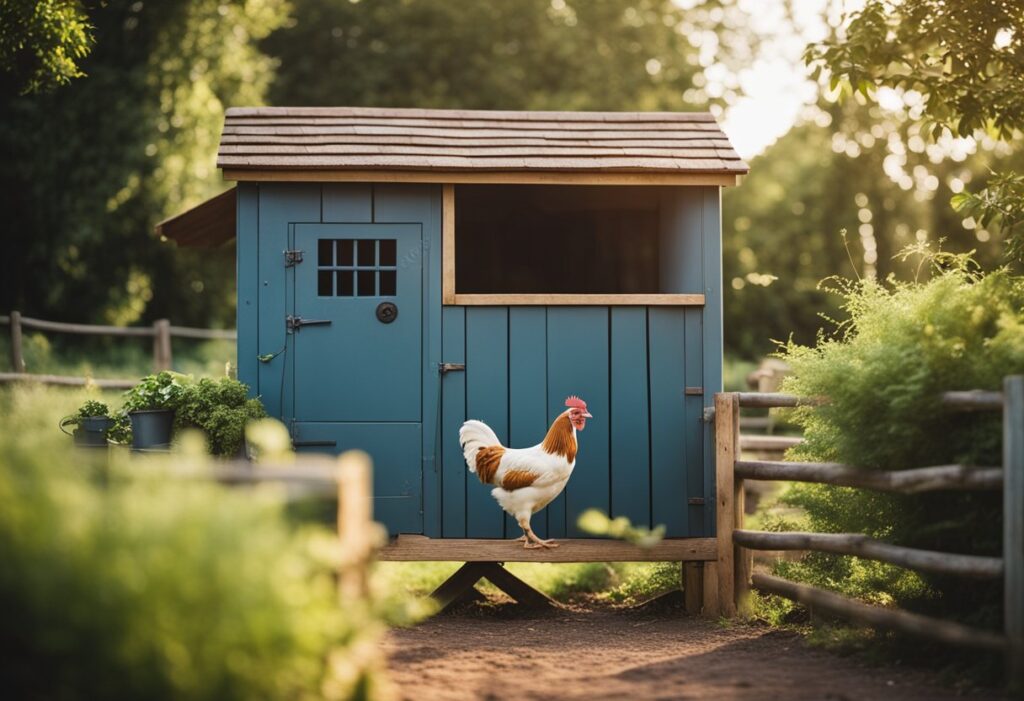
When constructing a chicken run, design and aesthetics are integral for both the welfare of the chickens and the visual harmony with the surroundings. Choices in architectural styles can majorly influence the overall appeal, while thoughtful landscaping and integration ensure that the chicken run complements its environment.
Architectural Styles
Chicken runs can vary from rustic to contemporary designs. A rustic style typically features natural materials like wood and stone, often with a traditional gambrel roof reminiscent of barns. In contrast, modern styles may utilize metals and clean lines, offering a sleek look with flat or skillion roofs. The selection should align with the owner’s taste as well as the architectural language of existing structures.
Landscaping and Integration
Landscaping is vital to integrate the chicken run into its environment seamlessly. The use of plantings, such as shrubs and flowers, can soften the structure’s appearance and provide shade for the chickens. Additionally, the choice of fencing materials can either make a run stand out or blend in. A balance between aesthetics and function is crucial, ensuring that the chickens have a safe and pleasant space, while the run enhances the garden or yard’s beauty.
DIY vs. Pre-built Chicken Runs
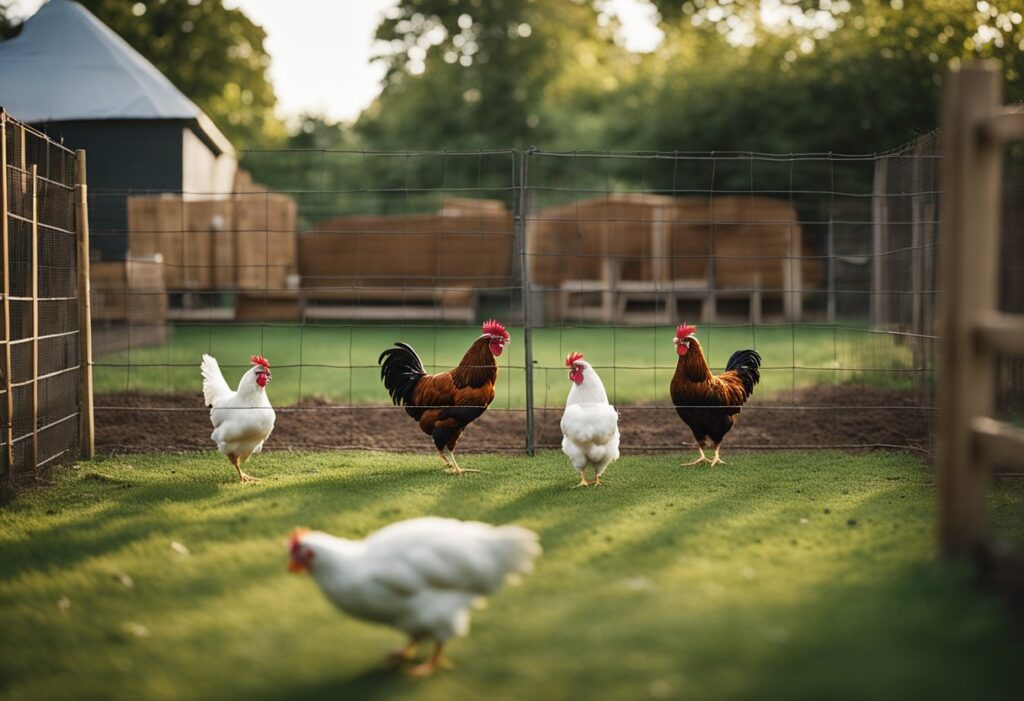
The choice between constructing a DIY chicken run and purchasing a pre-built option depends on the individual’s skills, budget, and specific needs for their flock. Each approach offers distinct advantages and drawbacks.
Pros and Cons of DIY Chicken Runs
Pros:
- Customization: DIY allows for tailoring dimensions and materials to fit specific space and flock requirements.
- Cost-Saving: Often less expensive than pre-built runs, as one can source materials and avoid labor costs.
Cons:
- Time-Consuming: Requires a significant investment of time, both in planning and construction.
- Skill Level: Success depends on the individual’s building skills; poor construction can lead to safety and durability issues.
Pros and Cons of Pre-built Chicken Runs
Pros:
- Convenience: Pre-built runs are ready-to-use and often come with assembly instructions or are fully assembled.
- Professional Construction: Typically, these runs are built by professionals, ensuring stability and durability.
Cons:
- Cost: Generally more expensive than DIY due to materials, construction, and brand mark-up.
- Limited Customization: Choices are limited to what is available in the market, which may not meet all specific needs.
Safety Features
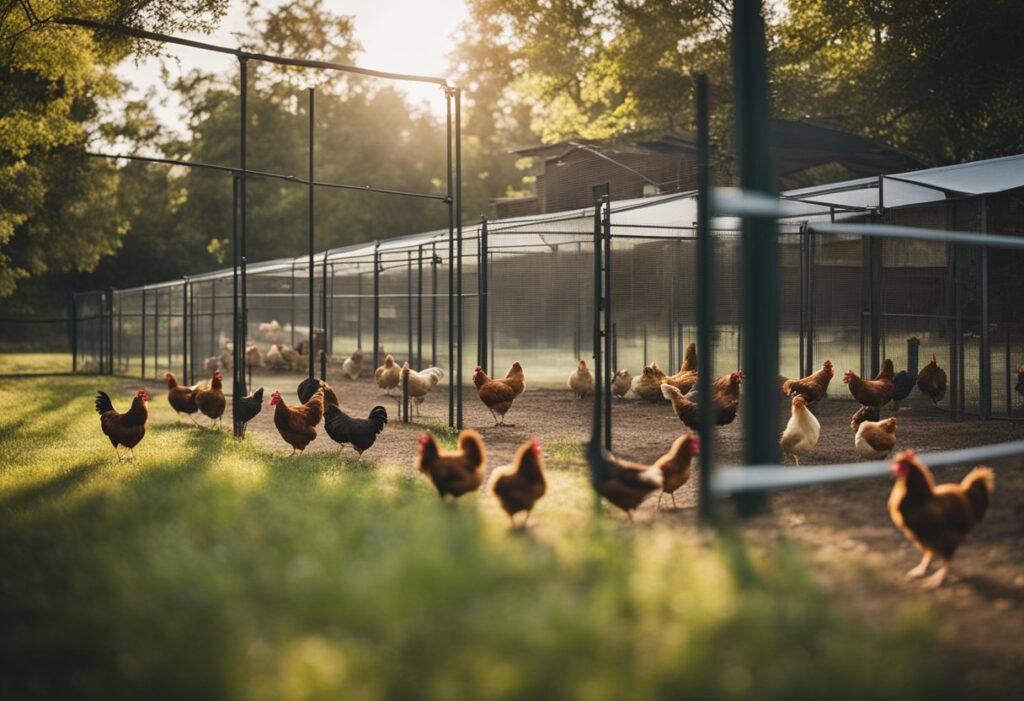
When designing the best chicken run, safety features are paramount to protect poultry from both predators and extreme weather. Below, detailed features focused on predator deterrents and weather resilience underscore the commitment to keeping chickens safe in their environment.
Predator Deterrents
- Fencing: A solid fence made from hardware cloth, not chicken wire, should encompass the run to prevent predators from reaching in or digging underneath. The mesh should be less than 1/4 inch to thwart smaller pests.MaterialMesh SizeHeightDepthHardware Cloth<1/4 inch>6 feet24 inches (buried)
- Locks: All entry points must have secure, raccoon-proof locks. Simple latches are often manipulated by smart predators.
Weather Resilience
- Roofing: Durable roofing materials, like corrugated metal, provide protection from precipitation and direct sunlight. Overhangs should extend beyond the run to prevent water from seeping in.MaterialBenefitMaintenance LevelCorrugated MetalWaterproof, sun-blockingLow
- Ventilation: Adequate airflow is crucial. Vents should be covered with predator-proof mesh to maintain fresh air while keeping the interior dry and comfortable.
Legal Considerations
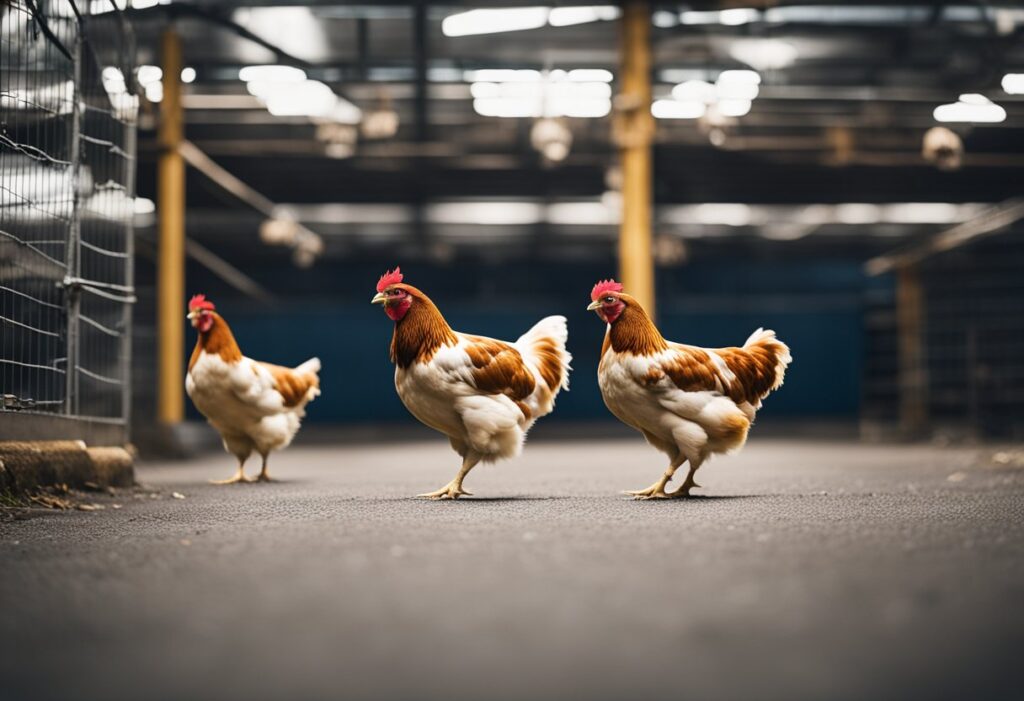
When constructing a chicken run, it is imperative to understand and comply with specific legal requirements. These often vary by location and can include zoning laws, building codes, and neighborhood covenants.
Zoning Laws and Regulations
Local zoning laws dictate how land can be used in different areas and may have specific provisions regarding the keeping of chickens and the construction of chicken runs. Individuals must check with their city or county planning office for relevant ordinances. For example:
- Residential Zoning: Typically allows for chicken runs under certain size and distance restrictions.
- Agricultural Zoning: May have more lenient regulations pertaining to poultry housing.
Neighborhood Restrictions
In addition to zoning, homeowners should review any neighborhood or homeowners’ association restrictions that may apply to their property. Here are common restrictions:
- Covenant, Conditions, & Restrictions (CC&Rs): Legally enforceable rules that dictate what can and cannot be done.Restriction TypeTypical ProvisionsAestheticRules about the appearance and maintenance of chicken runs.NoiseProhibitions on roosters or limits on the number of hens.LocationRegulations on how close structures can be to property lines.
Note: Violations of these rules can lead to fines or required removal of non-compliant structures.
Top Rated Chicken Runs
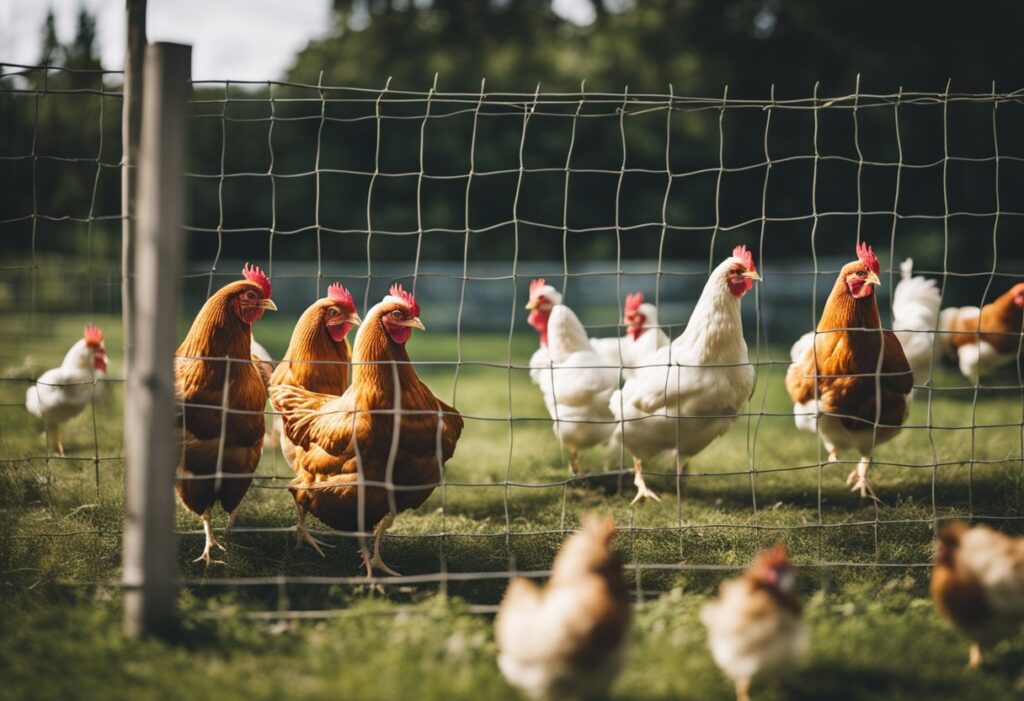
When selecting a chicken run, durability and size are key factors. The following are the most recommended options:
- Omlet Eglu Go UP Chicken Coop
With a fox-resistant chicken run, the Eglu Go UP is praised for its easy cleaning and portability. Its vertical design saves space while providing a comfortable area for chickens. - PawHut Wooden Chicken Coop
This coop includes a large outdoor run, protected by a solid fir wood frame and wire mesh. It offers ample space for chickens to roam and forage. - Advantek The Stilt House Rabbit Hutch
Though designed for rabbits, it’s a popular choice for small poultry flocks, providing an elevated shelter with an enclosed run below.
Each has its unique benefits:
| Chicken Run | Features |
|---|---|
| Omlet Eglu Go UP Chicken Coop | Portable, predator-resistant, easy to clean. |
| PawHut Wooden Chicken Coop | Spacious, durable fir wood frame, suitable for larger flocks. |
| Advantek The Stilt House Hutch | Elevated design, space-efficient, can be adapted for chickens. |
Consumers report high satisfaction with these products due to their design and functionality, making them top choices for backyard chicken enthusiasts.
Cost Considerations
When planning for a chicken run, it’s crucial to consider both the initial costs and the long-term investment. Proper budgeting ensures affordability, while evaluating long-term value safeguards against future expenses.
Budgeting for Your Chicken Run
Initial costs for constructing a chicken run can vary widely depending on materials and size. Materials such as wood, wire mesh, and roofing are the primary expenses. Here is a basic breakdown:
- Wood: A sturdy frame is essential. Cost will depend on the type of wood and quantity.
- Wire Mesh: Essential for protection; priced by length and quality.
- Roofing: Optional for some designs but recommended for weather protection.
- Hardware: Includes nails, screws, hinges, and locks.
For a small chicken run, one might expect an estimated cost of $200 to $500. Medium to larger setups can run from $500 to $2,000, depending on complexity.
Long-term Value
The long-term value of a chicken run hinges on material durability and design efficiency. Stainless steel mesh or pressure-treated wood may have higher upfront costs but they increase the lifespan of the run, thus providing better long-term value. Additionally, consider the design for:
- Ease of cleaning: Ensures healthy chickens and reduces time spent on maintenance.
- Protection from predators: Strong materials and construction minimize future repairs or losses.
- Expansion possibilities: Modular designs can be more cost-effective in the long run.
Investing in quality materials and thoughtful design early on can prevent excessive maintenance costs and the need for premature replacements.
Accessories and Enhancements
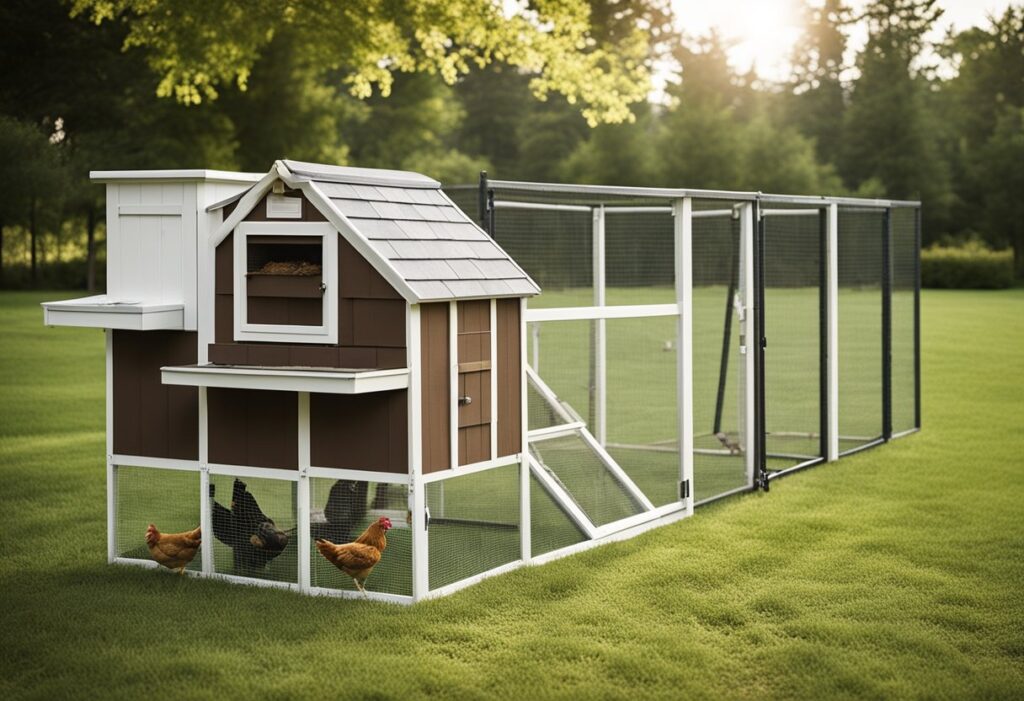
To optimize the health and happiness of chickens, certain accessories and enhancements are essential in any chicken run.
Feeders and Waterers
Feeders must ensure minimal waste and maximum efficiency. Models such as the Grandpa’s Feeders Automatic Chicken Feeder can hold up to 20 pounds of feed, providing a steady supply while deterring pests. Waterers should keep the water clean and fresh. The Harris Farms Heated Poultry Drinker prevents water from freezing during colder months, accommodating up to 35 chickens.
Nesting Boxes
Nesting boxes provide chickens with a private and comfortable space to lay eggs. They should be spacious, dark, and easy to clean. The Miller Manufacturing Plastic Nesting Box measures approximately 13″ x 13″ x 11″, fitting easily into most chicken runs, while its plastic construction simplifies the cleaning process.
Roosting Bars
Chickens instinctively roost off the ground at night for safety. Roosting bars should be sturdy and smooth to prevent injury. A standard size such as 2×4 inches is typically comfortable for their feet. Roosting space should allow for 8-10 inches per chicken, ensuring adequate room for all members of the flock to roost comfortably.
Conclusion
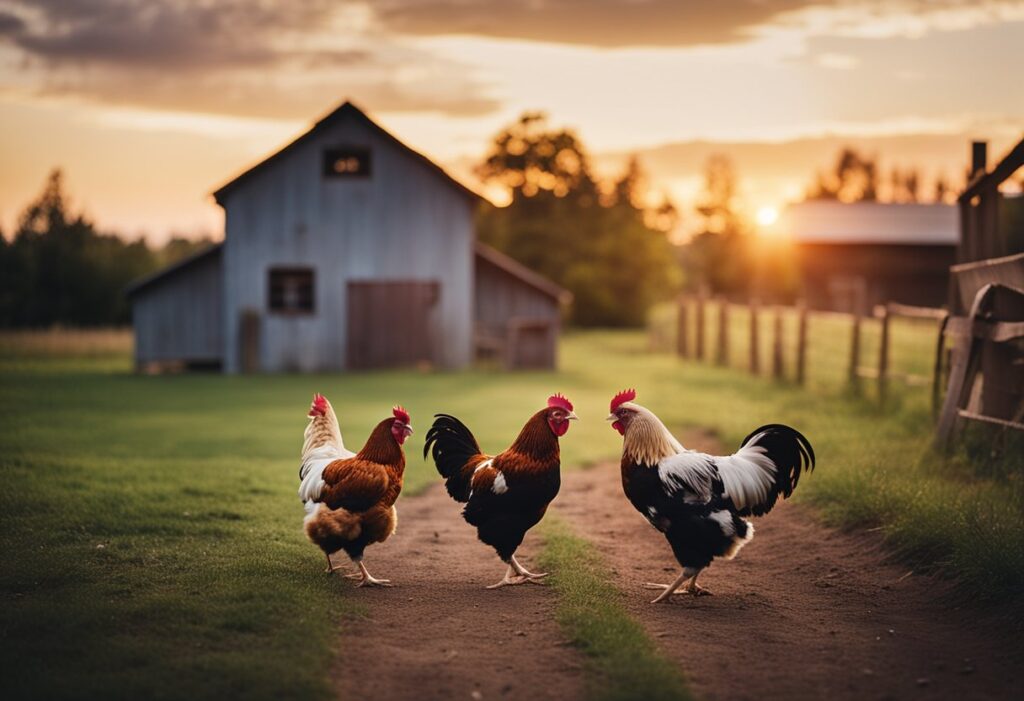
Selecting the ideal chicken run involves balancing several key considerations. Durability, size, and ease of cleaning are paramount. The best chicken runs are characterized by sturdy materials like galvanized steel and weather-resistant wood. These materials ensure longevity and protection against predators.
When assessing size, one must consider both the number of chickens and the space available. An optimal run allows for ample movement and exercise, typically allocating at least 10 square feet per chicken.
Accessibility for cleaning is crucial, as hygienic conditions prevent disease and ensure chicken well-being. Features such as slide-out trays and large access doors greatly facilitate maintenance.
For those looking to choose a chicken run, the following concise table summarizes essential features:
| Feature | Importance |
|---|---|
| Material | Must be durable and weatherproof |
| Size | Minimum of 10 sq ft per chicken |
| Cleaning | Must have easy access to clean |
In conclusion, an ideal chicken run seamlessly blends durability, appropriate sizing, and ease of maintenance, contributing to a healthy environment for chickens to thrive. Buyers are encouraged to use this information to inform their purchasing decisions.


